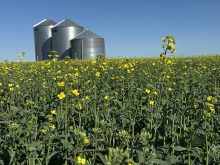Australian farmers are sure taking it on the chin this year.
A savage drought has devastated the grain crop and now livestock producers are being hammered.
The lack of moisture that shrivelled crops did the same thing to pasture grass and water supplies, forcing producers to ship livestock to feedlots.
The rush has driven down prices, with sheep values dropping 75 percent in four weeks, according to the Australian Broadcasting Corp. Cattle are also down.
There is speculation that Australia might have to import feed grain.
Read Also

Huge Black Sea flax crop to provide stiff competition
Russia and Kazakhstan harvested huge flax crops and will be providing stiff competition in China and the EU.
As we have reported, with Australia largely knocked out of the world wheat market, wheat prices have soared.
The question is: how long will the market stay up?
Last week we reported about several analysts’ concerns that today’s high prices would spur increased seeding for 2007, which could lower prices next year.
The United States Department of Agriculture winter wheat seeding area outlook comes out in January. But there are indications that seeded area could increase.
An Associated Press story out of Little Rock, Arkansas, quoted a wheat specialist with the University of Arkansas who said he expected farmers would plant at least 750,000 acres this year, compared to about 375,000 acres of wheat last year, a particularly small crop by historical standards.
Other anecdotal information also points to an increase in seeded area throughout the winter wheat belt, although maybe not such a large increase as indicated in Arkansas.
The USDA issued its first winter wheat crop condition report for the new season on Oct. 23. It said 86 percent of the expected U.S. crop was seeded, up from 79 percent last year and about level with the five-year average.
It said 65 percent had emerged, compared to 52 percent last year and 67 percent in the five-year average.
The crop appeared slightly better off this year compared to last year at the same time.
The amount rated excellent was 11 percent (compared to nine percent last year), good 46 percent (48 percent), fair 33 percent (33 percent), poor eight percent (seven percent) and very poor, two percent (three percent).
Most of the region suffered two years of drought but there are signs that the trend might change. A look at the U.S. drought monitor map at www.drought.unl.edu shows the central and southern plains are still drier than they were at this time last year, but they have improved slightly from what they were a couple of weeks ago.
The U.S. National Weather Service climate prediction centre forecasts slightly wetter than normal conditions in Kansas, Oklahoma and Texas through the winter.
















